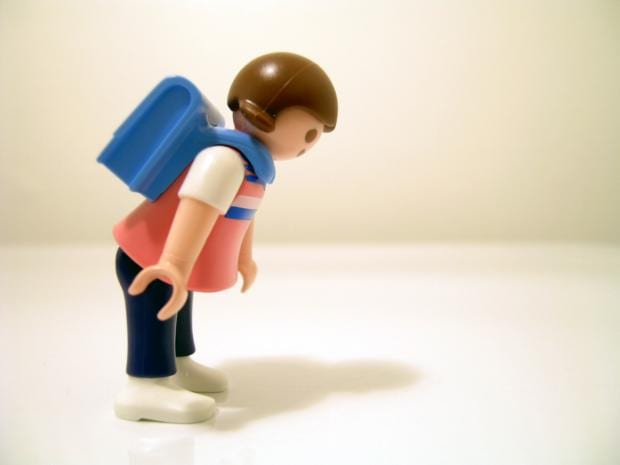There’s a lot that students need to fit into their school backpacks these days–text books, note books, homework, pencils, pens, gym clothes, lunches, coats and even cell phones. However, if a backpack is the wrong size or is worn improperly, your child can suffer injuries to his back and shoulders. Selecting a backpack involves more than choosing one with a superhero’s emblem or a designer’s logo emblazoned across it; it must be measured and fitted properly to your child’s torso.
Step 1
Measure your child’s torso. Locate the seventh vertebrae-the bony spot at the base of his neck–and place a piece of masking or painter’s tape there. Have your child place his hands on his hips, with the thumbs facing back and fingers facing forward. Place the tape measure from thumb to thumb and place another piece of masking tape directly below the first piece. Following the shape of your child’s spine, measure from the top piece of tape to the bottom piece of tape.
Step 2
Compare your child’s torso measurement. If it is less than 18 inches, he will need a backpack with a small size suspension. A torso measurement from 18 to 20 inches will require a medium and over 21 inches will require a large.
Step 3
Have your child try on a backpack and check other features. If the backpack has a hip belt, it should “cup” your child’s hips. Cinch the backpack; the pads should not touch and there should be extra webbing. The shoulder straps should hold the backpack right below your child’s seventh vertebrae and wrap comfortably around the shoulders. Measure from below your child’s armpit to the bottom of the strap padding; it should be at least 5 inches or more.
Step 4
Load the backpack with the items your child will need. Have your child put on the backpack to see how easy it is to access the different items. Have him walk around wearing the loaded backpack, including walking up and down stairs. Watch his posture to see whether he strains or bends his back forward to carry the backpack. Have your child remove the backpack and weigh it; it should not be more than 10 to 15 percent of his body weight.
Step 5
Choose a wheeled backpack for your child. Check with the school before purchasing a wheeled backpack as some schools ban these due to the potential risks of falling, dropping or tripping over them while dragging them up and down stairs. If your child’s school allows them, have your child grab the fully extended handle. Bending to pull the backpack will create back problems. Do not overload a wheeled backpack as it can put strain on your child’s shoulders.





